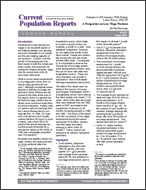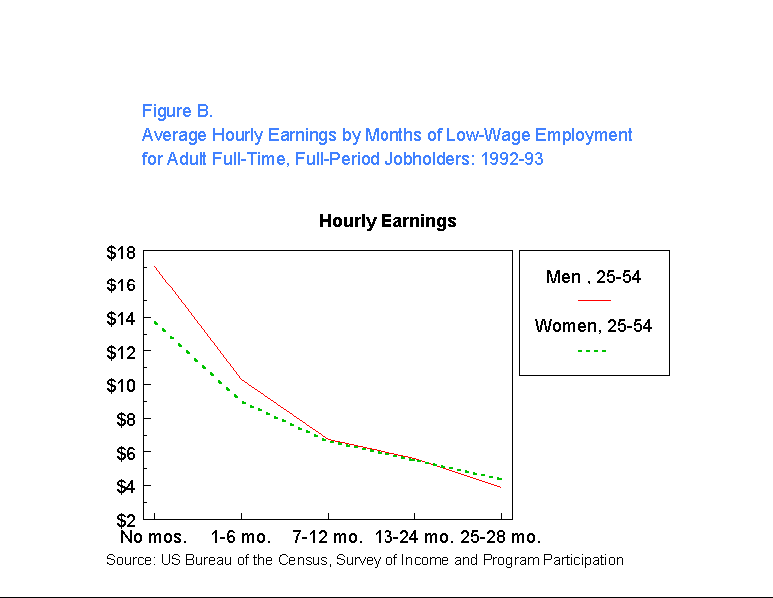Dynamics of Economic Well-Being: Labor Force, 1992-93. A Perspective on Low-Wage Workers
Dynamics of Economic Well-Being: Labor Force, 1992-93. A Perspective on Low-Wage Workers
Introduction
Employment in jobs paying low wages is an important aspect of the National debate over growing economic inequality in our society and the job creating capacity of our economy. Concern over the growth of low-paying jobs has been raised in both the media and policy circles, and proposals for raising the Federal minimum wage from it's current level of $4.24 have been discussed.
What is known about employment in low-wage jobs comes from research using government surveys.1 Although conceptual issues abound in defining low-wage employment (some of these are discussed in the Note at the end of the report), there is a general belief that low-wage workers are relatively more numerous today than in previous decades. Indeed, data on workers with low earnings from the Census Bureau tend to corroborate this. In 1994, 16.2 percent of all persons who usually worked full-time (35 hours or more a week), year-round (50 to 52 weeks) had annual earnings below the poverty threshold for a four-person family (or $13,828); in 1984, the comparable proportion was 14.6 percent.2
Research and statistics about low-wage workers are based primarily on cross-sectional data from household surveys which relate to a point or period of time; for example, a month or a year. Such statistical “snapshots,” however, do not capture the fluidity of the labor market. People are continually moving into and out of jobs and the labor force. Consequently, it is important to observe the occurrence of low-wage employment during periods of time—and this can be done with data from longitudinal surveys. These surveys, therefore, can provide a “panoramic” view of individuals’ earnings experiences across time.
The data in this report were collected in the Survey of Income and Program Participation (SIPP), a longitudinal survey which follows the same people over nearly 2 1/2 years. Most of the data discussed here were obtained from the 1992 panel of SIPP and relate to the experiences of persons in 28 months occurring primarily in 1992 and 1993. The focus of the report is on the occurrence of low-wage employment during this period among the 53.9 million workers who had wage and salary earnings in each of the 28 months.3 These workers are referred to as full-time, full-period jobholders.
_______________
1 For an example of the research in this area, see Sheldon Danziger and Gregory Acs, “Educational Attainment, Industrial Structure, and Male Earnings Through the 1980s,” Journal of Human Resources, Vol. 28, No. 3, Summer 1993, pp. 618-648 and John McNeil, Workers With Low Earnings: 1964 to 1990, Current Population Reports, Consumer Income, Series P-60, No. 178 (Washington, DC, Bureau of the Census, March 1992).
2 See McNeil, Workers With Low Earnings: 1964 to 1990.
3 In calendar year 1993, 82.5 million persons worked between 50 to 52 weeks for 35 hours a week or more in the majority of those weeks according to the Bureau of Labor Statistics.
Others in Series
Publication
Publication
Publication






